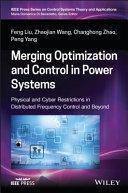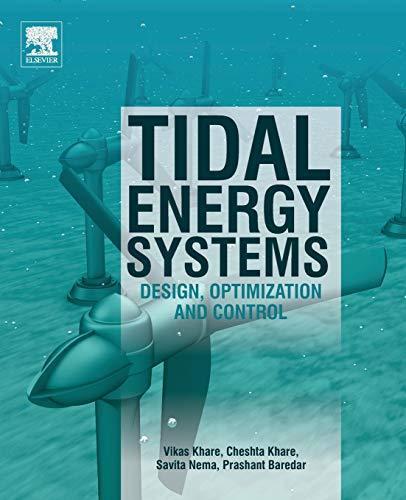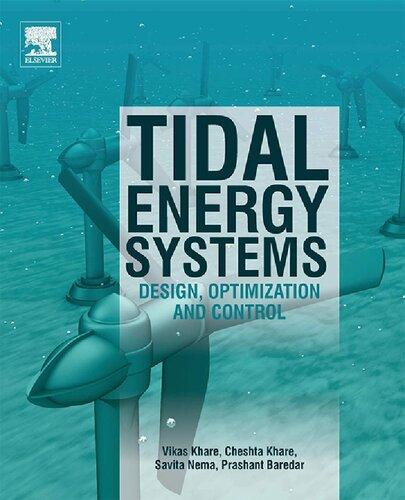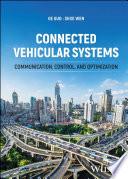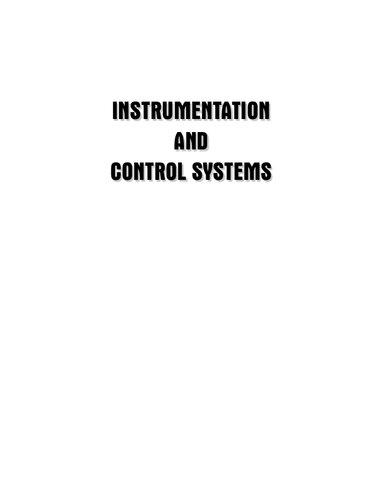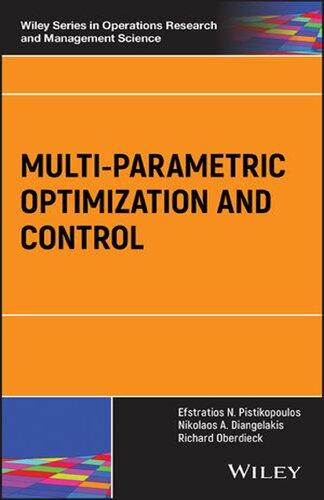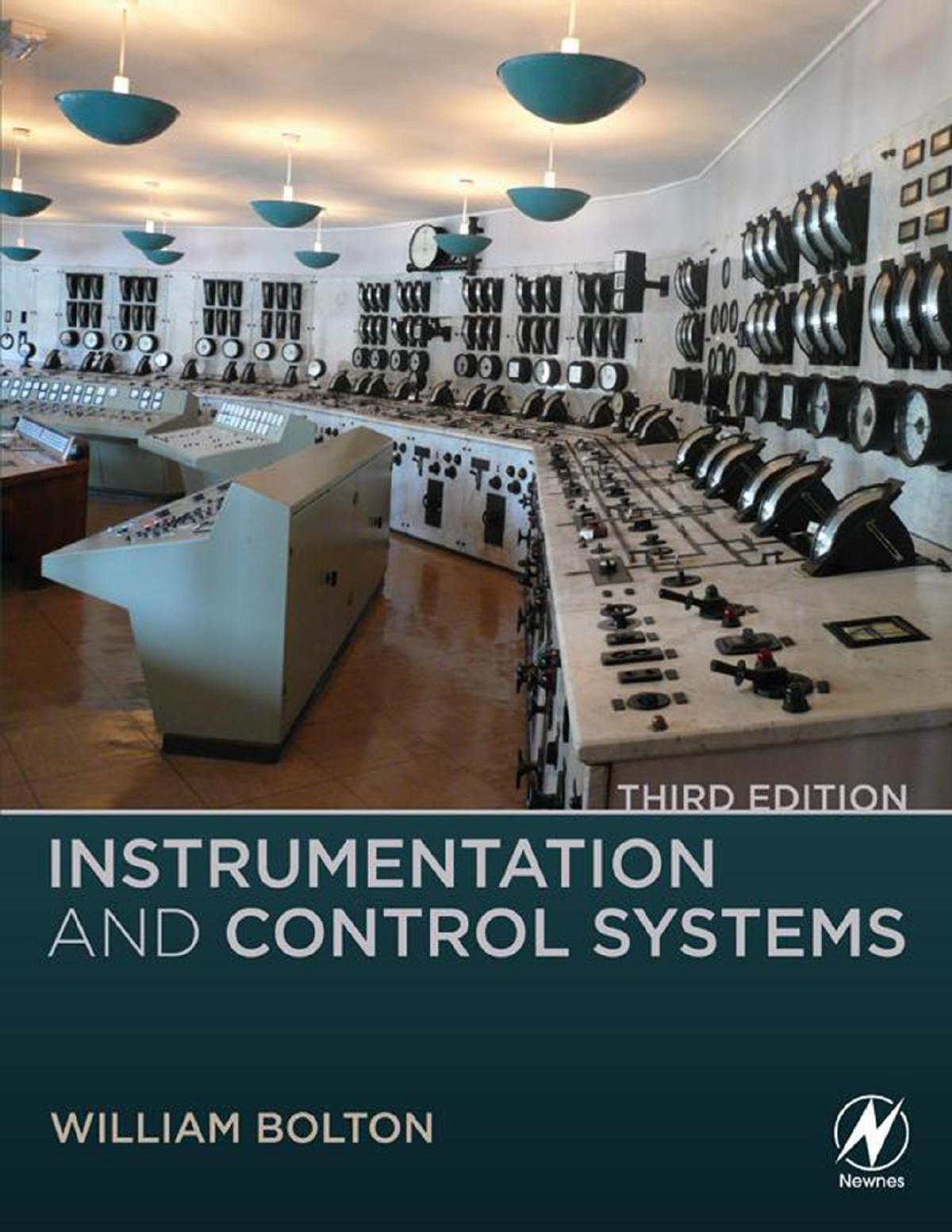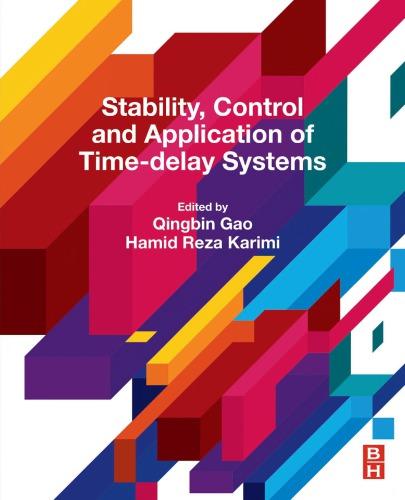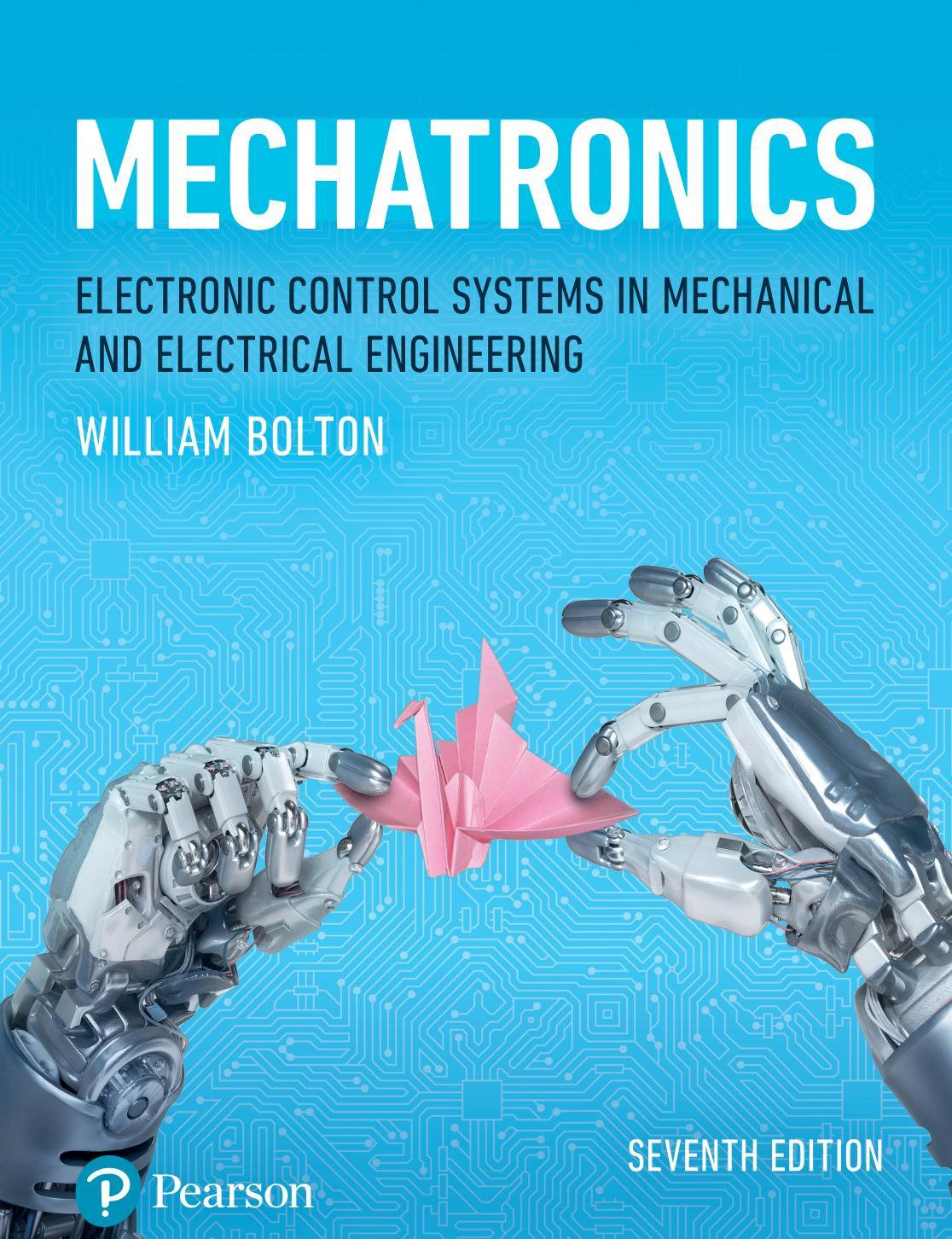BooksintheIEEEPressSeriesonControlSystems
TheoryandApplications
SeriesEditor: MariaDomenicaDiBenedetto,Universityofl’Aquila,Italy
Theseriespublishesmonographs,editedvolumes,andtextbookswhicharegeared forcontrolscientistsandengineers,aswellasthoseworkinginvariousareasof appliedmathematicssuchasoptimization,gametheory,andoperations.
1. AutonomousRoadVehiclePathPlanningandTrackingControl LeventGüvenç,BilinAksun-Güvenç,ShengZhu,¸SükrüYarenGelbal
2. EmbeddedControlforMobileRoboticApplications LeenaVachhani,PranjalVyas,andArunkumarG.K .
3. MergingOptimizationandControlinPowerSystems:PhysicalandCyber RestrictionsinDistributedFrequencyControlandBeyond FengLiu,ZhaojianWang,ChanghongZhao,andPengYang.
Contents
Foreword xv
Preface xvii
Acknowledgments xix
1Introduction 1
1.1TraditionalHierarchicalControlStructure 2
1.1.1HierarchicalFrequencyControl 2
1.1.1.1PrimaryFrequencyControl 4
1.1.1.2SecondaryFrequencyControl 5
1.1.1.3TertiaryFrequencyControl 5
1.1.2HierarchicalVoltageControl 5
1.1.2.1PrimaryVoltageControl 6
1.1.2.2SecondaryVoltageControl 7
1.1.2.3TertiaryVoltageControl 7
1.2TransitionsandChallenges 7
1.3RemovingCentralCoordinators:DistributedCoordination 8
1.3.1DistributedControl 11
1.3.2DistributedOptimization 12
1.4MergingOptimizationandControl 13
1.4.1Optimization-GuidedControl 14
1.4.2Feedback-BasedOptimization 16
1.5OverviewoftheBook 17 Bibliography 19
2Preliminaries 23
2.1Norm 23
2.1.1VectorNorm 23
2.1.2MatrixNorm 24
2.2GraphTheory 26
2.2.1BasicConcepts 26
2.2.2LaplacianMatrix 26
2.3ConvexOptimization 28
2.3.1ConvexSet 28
2.3.1.1BasicConcepts 28
2.3.1.2Cone 30
2.3.2ConvexFunction 31
2.3.2.1BasicConcepts 31
2.3.2.2Jensen’sInequality 35
2.3.3ConvexProgramming 35
2.3.4Duality 36
2.3.5SaddlePoint 39
2.3.6KKTConditions 39
2.4ProjectionOperator 41
2.4.1BasicConcepts 41
2.4.2ProjectionOperator 42
2.5StabilityTheory 44
2.5.1LyapunovStability 44
2.5.2InvariancePrinciple 46
2.5.3Input–OutputStability 47
2.6PassivityandDissipativityTheory 49
2.6.1Passivity 49
2.6.2Dissipativity 51
2.7PowerFlowModel 52
2.7.1NonlinearPowerFlow 53
2.7.1.1BusInjectionModel(BIM) 53
2.7.1.2BranchFlowModel(BFM) 54
2.7.2LinearPowerFlow 55
2.7.2.1DCPowerFlow 55
2.7.2.2LinearizedBranchFlow 56
2.8PowerSystemDynamics 56
2.8.1SynchronousGeneratorModel 57
2.8.2InverterModel 58 Bibliography 60
3BridgingControlandOptimizationinDistributedOptimal FrequencyControl 63
3.1Background 64
3.1.1Motivation 64
3.1.2Summary 66
3.1.3Organization 67
3.2PowerSystemModel 67
3.2.1GeneratorBuses 68
3.2.2LoadBuses 69
3.2.3BranchFlows 70
3.2.4DynamicNetworkModel 72
3.3DesignandStabilityofPrimaryFrequencyControl 74
3.3.1OptimalLoadControl 74
3.3.2MainResults 75
3.3.3Implications 79
3.4ConvergenceAnalysis 79
3.5CaseStudies 88
3.5.1TestSystem 88
3.5.2SimulationResults 89
3.6ConclusionandNotes 92 Bibliography 93
4PhysicalRestrictions:InputSaturationinSecondary FrequencyControl 97
4.1Background 98
4.2PowerSystemModel 100
4.3ControlDesignforPer-NodePowerBalance 101
4.3.1ControlGoals 102
4.3.2DecentralizedOptimalController 103
4.3.3DesignRationale 105
4.3.3.1Primal–DualAlgorithms 105
4.3.3.2DesignofController(4.6) 105
4.4OptimalityandUniquenessofEquilibrium 108
4.5StabilityAnalysis 112
4.6CaseStudies 120
4.6.1TestSystem 120
4.6.2SimulationResults 122
4.6.2.1StabilityandOptimality 122
4.6.2.2DynamicPerformance 123
4.6.2.3ComparisonwithAGC 124
4.6.2.4DigitalImplementation 124
4.7ConclusionandNotes 128 Bibliography 131
5PhysicalRestrictions:LineFlowLimitsinSecondary FrequencyControl 135
5.1Background 136
x Contents
5.2PowerSystemModel 137
5.3ControlDesignforNetworkPowerBalance 138
5.3.1ControlGoals 139
5.3.2DistributedOptimalController 141
5.3.3DesignRationale 142
5.3.3.1Primal–DualGradientAlgorithms 142
5.3.3.2ControllerDesign 143
5.4OptimalityofEquilibrium 144
5.5AsymptoticStability 148
5.6CaseStudies 155
5.6.1TestSystem 155
5.6.2SimulationResults 156
5.6.2.1StabilityandOptimality 156
5.6.2.2DynamicPerformance 158
5.6.2.3ComparisonwithAGC 158
5.6.2.4CongestionAnalysis 158
5.6.2.5TimeDelayAnalysis 161
5.7ConclusionandNotes 165 Bibliography 165
6PhysicalRestrictions:NonsmoothnessofObjective FunctionsinLoad-FrequencyControl 167
6.1Background 167
6.2NotationsandPreliminaries 169
6.3PowerSystemModel 170
6.4ControlDesign 171
6.4.1OptimalLoadFrequencyControlProblem 172
6.4.2DistributedControllerDesign 173
6.5OptimalityandConvergence 176
6.5.1Optimality 176
6.5.2Convergence 178
6.6CaseStudies 183
6.6.1TestSystem 183
6.6.2SimulationResults 184
6.7ConclusionandNotes 187 Bibliography 188
7CyberRestrictions:ImperfectCommunicationinPower ControlofMicrogrids 191
7.1Background 192
7.2PreliminariesandModel 193
7.2.1NotationsandPreliminaries 193
7.2.2EconomicDispatchModel 194
7.3DistributedControlAlgorithms 195
7.3.1SynchronousAlgorithm 195
7.3.2AsynchronousAlgorithm 196
7.4OptimalityandConvergenceAnalysis 198
7.4.1VirtualGlobalClock 199
7.4.2AlgorithmReformulation 200
7.4.3OptimalityofEquilibrium 203
7.4.4ConvergenceAnalysis 204
7.5Real-TimeImplementation 206
7.5.1MotivationandMainIdea 206
7.5.2Real-TimeASDPD 208
7.5.2.1ACMGs 208
7.5.2.2DCMicrogrids 208
7.5.3ControlConfiguration 210
7.5.4OptimalityoftheImplementation 211
7.6NumericalResults 213
7.6.1TestSystem 213
7.6.2Non-identicalSamplingRates 214
7.6.3RandomTimeDelays 217
7.6.4ComparisonwiththeSynchronousAlgorithm 217
7.7ExperimentalResults 219
7.8ConclusionandNotes 222 Bibliography 224
8CyberRestrictions:ImperfectCommunicationinVoltage ControlofActiveDistributionNetworks 229
8.1Background 230
8.2PreliminariesandSystemModel 232
8.2.1NoteandPreliminaries 232
8.2.2SystemModeling 233
8.3ProblemFormulation 234
8.4AsynchronousVoltageControl 235
8.5OptimalityandConvergence 237
8.5.1AlgorithmReformulation 238
8.5.2OptimalityofEquilibrium 242
8.5.3ConvergenceAnalysis 243
8.6Implementation 245
8.6.1CommunicationGraph 245
8.6.2OnlineImplementation 246
8.7CaseStudies 246
8.7.18-BusFeederSystem 247
8.7.2IEEE123-BusFeederSystem 250
8.8ConclusionandNotes 253 Bibliography 254
9RobustnessandAdaptability:UnknownDisturbancesin Load-SideFrequencyControl 257
9.1Background 258
9.2ProblemFormulation 259
9.2.1PowerNetwork 259
9.2.2PowerImbalance 260
9.2.3EquivalentTransformationofPowerImbalance 261
9.3ControllerDesign 263
9.3.1ControllerforKnown P in j 263
9.3.2ControllerforTime-VaryingPowerImbalance 264
9.3.3Closed-LoopDynamics 265
9.4EquilibriumandStabilityAnalysis 266
9.4.1Equilibrium 266
9.4.2AsymptoticStability 269
9.5RobustnessAnalysis 274
9.5.1RobustnessAgainstUncertainParameters 274
9.5.2RobustnessAgainstUnknownDisturbances 275
9.6CaseStudies 277
9.6.1SystemConfiguration 277
9.6.2Self-GeneratedData 279
9.6.3PerformanceUnderUnknownDisturbances 282
9.6.4SimulationwithRealData 282
9.6.5ComparisonwithExistingControlMethods 284
9.7ConclusionandNotes 286 Bibliography 287
10RobustnessandAdaptability:PartialControlCoveragein TransientFrequencyControl 289
10.1Background 289
10.2Structure-PreservingModelofNonlinearPowerSystem Dynamics 291
10.2.1PowerNetwork 291
10.2.2SynchronousGenerators 292
10.2.3DynamicsofVoltagePhaseAngles 293
10.2.4CommunicationNetwork 294
10.3FormulationofOptimalFrequencyControl 294
10.3.1OptimalPower-SharingAmongControllableGenerators 294
10.3.2EquivalentModelWithVirtualLoad 295
10.4ControlDesign 296
10.4.1ControllerforControllableGenerators 296
10.4.2ActivePowerDynamicsofUncontrollableGenerators 297
10.4.3ExcitationVoltageDynamicsofGenerators 298
10.5OptimalityandStability 298
10.5.1Optimality 298
10.5.2Stability 300
10.6ImplementationWithFrequencyMeasurement 306
10.6.1Estimating ��i UsingFrequencyFeedback 306
10.6.2StabilityAnalysis 307
10.7CaseStudies 310
10.7.1TestSystemandData 310
10.7.2PerformanceUnderSmallDisturbances 312
10.7.2.1EquilibriumanditsOptimality 312
10.7.2.2PerformanceofFrequencyDynamics 313
10.7.3PerformanceUnderLargeDisturbances 316
10.7.3.1GeneratorTripping 317
10.7.3.2Short-CircuitFault 318
10.8ConclusionandNotes 321 Bibliography 322
11RobustnessandAdaptability:HeterogeneityinPower ControlsofDCMicrogrids 325
11.1Background 325
11.2NetworkModel 328
11.3OptimalPowerFlowofDCNetworks 329
11.3.1OPFModel 329
11.3.2UniquenessofOptimalSolution 331
11.4ControlDesign 334
11.4.1DistributedOptimizationAlgorithm 334
11.4.2OptimalityofEquilibrium 335
11.4.3ConvergenceAnalysis 338
11.5Implementation 344
11.6CaseStudies 346
11.6.1TestSystemandData 346
11.6.2AccuracyAnalysis 348
11.6.3DynamicPerformanceVerification 348
11.6.4PerformanceinPlug-n-playOperations 352
11.7ConclusionandNotes 353 Bibliography 354
AppendixATypicalDistributedOptimizationAlgorithms 357
A.1Consensus-BasedAlgorithms 357
A.1.1ConsensusAlgorithms 358
A.1.2Cutting-PlaneConsensusAlgorithm 359
A.2First-OrderGradient-BasedAlgorithms 362
A.2.1DualDecomposition 363
A.2.2AlternatingDirectionMethodofMultipliers 366
A.2.3Primal–DualGradientAlgorithm 368
A.2.4ProximalGradientMethod 371
A.3Second-OrderNewton-BasedAlgorithms 374
A.3.1BarrierMethod 374
A.3.2Primal–DualInterior-PointMethod 375
A.4Zeroth-OrderOnlineAlgorithms 377 Bibliography 379
AppendixBOptimalPowerFlowofDirectCurrentNetworks 385
B.1MathematicalModel 385
B.1.1Formulation 385
B.1.2EquivalentTransformation 387
B.2ExactnessofSOCRelaxation 388
B.2.1SOCRelaxationofOPFinDCNetworks 388
B.2.2Assumptions 388
B.2.3ExactnessoftheSOCRelaxation 389
B.2.4TopologicalIndependence 396
B.2.5UniquenessoftheOptimalSolution 396
B.2.6BranchFlowModel 397
B.3CaseStudies 399
B.3.116-BusSystem 399
B.3.2Larger-ScaleSystems 401
B.4DiscussiononLineConstraints 402
B.4.1OPFwithLineConstraints 402
B.4.2ExactnessConditionswithLineConstraints 403
B.4.3ConstructingApproximateOptimalSolutions 406
B.4.3.1DirectConstructionMethod 407
B.4.3.2SlackVariableMethod 408 Bibliography 409
Index 411
Foreword
Withtheever-increasingpenetrationofdistributedenergyresources(DERs),such asdistributedgenerations(DGs),electricvehicles(EVs),andcustomerenergy storages(CESs),thecentralized,hierarchicalcontrolarchitecturedevelopedfor thetraditionalpowersystemfacesunprecedentedchallengesarisingfrommassivebutfragmentedcontrollableresources.Ontheonehand,itmightbeunwise toregulatemillionsofindividualDERsdispersedacrossavastland.Ontheother hand,suchanarchitectureheavilydependsonintensivecommunicationandusuallyslowsdownthecontrolresponse,whichmaynotcopewiththefastvariationof renewablegenerations.Theseissuesbringpotentialriskstothestabilityandeconomyofpowersystemoperation.Inthisregard,distributedcontrolanddistributed optimizationapproachesareexpectedtosupplementtheexistingcontrolstructuretorelievethedependenceonthecontrolcenterbyleveragingneighboring communicationsamongcontrollable(aggregate)DERs.
Conventionally,thetwoapproachesareinvestigatedseparatelyduetodifferent goalsandtimescales.Specifically,thedistributedcontrolfocusesonfast-timescalestabilityproblemslikeprimaryandsecondarycontrol,whilethedistributed optimizationaddressestheslow-time-scaleoptimizationproblemslikeeconomic dispatchandenergytrading.However,ourpowersystemdesiresacoalescenceof thetwoapproachestoeffectivelyorganizeandutilizethemassivebutfragmented controllableresourcestofacilitatestableandeconomicoperation.
Thisisthefirstbooktosystematicallyexploretheintegrationofoptimization andcontrolinpowersystemstowardadistributedparadigm.Rootedinthe ideaof“forwardandreverseengineering,”thebooksuggeststhemethodologies of“optimization-guidedcontrol”and“feedback-basedoptimization.”Itenvisionsthedistributedoptimalcontrolofpowersystemswithappealingdesign frameworks,particularlywhenconsideringcomplicatedconstraintsenforcedby physicalandcyberrestrictions.Thisbookalsogivesrigorousproofswithin-depth insightsandrichdemonstrativeexamplesfrompracticalapplications,whichmay benefitboththeoreticalresearchandindustrialdeployment.
Foreword
Theauthorsareallprofessionalandreputationalyoungresearcherswhohave accomplishedimpactfulworksintheoriesandapplicationsofdistributedcontrol andoptimizationinpowersystems,rangingfromtransmissionanddistribution gridstomicrogrids.Iamthereforedelightedtoseethattheysummarizetheir recentinspiringworksandshednewlightonthecontroldesignofpowersystemsatthecuttingedgeoftransition.Ibelieveitisanoutstandingreferencefor graduatestudents,researchers,andengineersinterestedinpowersystemcontrol andoptimization.
ChengshanWang
DirectorofSchoolofElectricaland
InformationEngineering,TianjinUniversity AcademicianofChineseAcademyofEngineering
Preface
Asaworldwidetrend,ourpowersystemisundergoingahistoricaltransitionfrom thetraditionaltoanewlandscapewithhighpenetrationofrenewableenergies andpowerelectronics.AsP.W.Andersonsaidaboutthestructureofsciencein 1972,“moreisdifferent.”Notsurprisingly,theshiftofourpowersystemfollows thesameprinciple.
Withtheexplosionofrenewablegeneration,millionsofsmall-capacity,volatile, andheterogeneousrenewablegenerators,suchaswind-turbinegeneratorsand photovoltaics,havebeenencroachingonthedominionofafewlarge-capacity traditionalgenerators.Moreover,thenumberisrapidlyevergrowingeveryday. Withtheneweralooming,onenaturalbutcriticalquestionarises:Canthe current,top-down,central-dominantcontrolarchitectureestablishedforthe traditionalpowersystemstillcopewiththetransition?Despiteabroadspectrum ofopinions,atleastonegeneralagreementcouldbereachedfromdisagreement. Thatis,thefuturepowersystemcallsforreshapingthecontrolparadigmto makeitmorescalabletothevastnumberofdevices,morecompatiblewith ever-increasingheterogeneity,moreefficientinfast-varyingoperationenvironments,moreadaptabletodiverseoperationmodes,andmorerobustagainst unexpectedperturbationsandevenfailures.
Recentyearshavewitnessedremarkableprogressindistributedcontroltheory, convexoptimization,measurementandcommunicationtechnologies,and advancedpowerelectronicsengineering.Thecross-fertilizationamongthese terrificsuccessesfurthercreatespotentialopportunitiestomeetthechallenges mentionedabove.Thetwomostcommonmightbethefollowing:(i)relieving thestrongdependenceonacentralcoordinatorand(ii)reshapingthetop-down architecturebybreakingtheoriginalcontrolhierarchy.Theformeradvocates adistributedcontrolparadigmtoendowthepowersystemwithhigherscalability,compatibility,androbustness,whilethelattersuggestsemergingthe slow-time-scaleoptimizationandfast-time-scalecontroltoachievestronger adaptabilityandfasterresponse.Asaconsequence,manyfruitfulandinnovative
researcheshavebeenconductedtodate.Thisbookisnotanaccountofallthe leading-edgeachievementsbutthepersonaleffortsoftheauthorsalongside, focusingonhowtoaddressthephysicalandcyberrestrictionsindistributed controldesignformeetingtherequirementoffuturepowersystems.
Particularly,inthisbook,weconcentratetheattentioninfrequencycontrolas theever-increasingrenewablesandpowerelectronicsleadtoadramaticdrop ofsysteminertia,raisinggreatconcernswithfrequencystabilityandsystem security.However,thisbookalsostretchesouttopartofvoltagecontroland beyond,involvingdifferentlevels/sizesofpowersystems,fromhigh-voltage transmissionsystemsandmiddle/low-voltagedistributionsystemstomicrogrids. Advancedmathematicaltools,designmethodologies,andillustrativeexamples withnumerical/experimentalsimulationsaresystematicallyorganized,aiming toprovidethereaderwithavisiononhowtoemergeoptimizationandcontrolin powersystemsunderthedistributedcontrolparadigmwithspecialconsiderations posedbydiversephysicalandcyberrestrictions.
Thisbookisorganizedintofourparts.PartI(Chapters1–2)presentsthe introductionandnecessarypreliminariesinoptimizationtheory,controltheory, andpowersystemmodeling.PartII(Chapters3–6)demonstrateshowtobridge optimizationandcontroltodeviseoptimization-guideddistributedfrequency controlfromboth“forwardengineering”and“reverseengineering”perspectives. Physicalrestrictionsarisingfromoperationalconstraintsandobjectivefunctions areaddressedwithrigorousproof.PartIII(Chapters7–8)isdedicatedtodesigning distributedfrequencyandvoltagecontrolwithdifferentcyberrestrictionsdue toimperfectcommunication,wherethefeedback-basedoptimizationismostly involvedin.Lastly,PartIV(Chapters9–11)extendstothescopeofrobustness andadaptabilityofdistributedoptimalcontrol,suchastherobustnessagainst unknowndisturbances,flexibilitytopartialcontrolcoverage,andadaptabilityto heterogeneouscontrolconfigurations.
Hence,thisbookisintendedtobeofvaluetograduatestudentsandresearchers whoworkintheoryandapplicationsofdistributedcontrolandoptimization,especiallytheirapplicationsinpowersystems.Thisalsocanbeusedasareferenceby electricalengineerstoimproveindustrypracticesinpowersystemcontrol.
October,2021 FengLiu,Beijing
ZhaojianWang,Shanghai ChanghongZhao,HongKong PengYang,Beijing
Acknowledgments
Thisbooksummarizesourrecentresearchaboutdistributedoptimalcontrolof powersystems.MostworkswerejointlycarriedoutintheDepartmentofElectrical EngineeringatTsinghuaUniversityandtheDepartmentofElectricalEngineering attheCaliforniaInstituteofTechnology.
Theauthorswouldliketothankmanypeoplefortheircontributionstothis booksincerely.Moreover,theauthorsareparticularlyindebtedtoProf.Steven H.LowfromtheCaliforniaInstituteofTechnology,Prof.ShengweiMeiand Prof.QiangLufromTsinghuaUniversity,Prof.FelixF.WufromtheUniversity ofCaliforniaatBerkeley,andProf.XinpingGuanfromShanghaiJiaoTong Universityfortheirlong-lastinginspiration,encouragement,andsupporttoour research.WealsothankMr.YifanSu,Mr.SichengDeng,Prof.LaijunChen,and Prof.YingChenfromTsinghuaUniversity,Dr.JohnZFPangfromCalifornia InstituteofTechnology,Prof.PengYifromTongjiUniversity,andProf.Ming CaofromtheUniversityofGroningen,whohavecontributedmaterialstothis book.Inaddition,weacknowledgeSandraGrayson,KimberlyMonroe-Hill, ViniprammiaPremkumar,andotherstaffsatIEEEWileyfortheirassistanceand helpinpreparingthisbook.
TheauthorsappreciatethesupportfromtheMajorSmartGridJointProject oftheNationalNaturalScienceFoundationofChinaandStateGrid(U1766206), theNaturalScienceFoundationofChina(51677100,62103265),the“Chenguang Program”supportedbyShanghaiEducationDevelopmentFoundationand ShanghaiMunicipalEducationCommissionofChina(20CG11),theDirectGrant (4055128)oftheChineseUniversityofHongKong,andtheHongKongResearch GrantsCouncilthroughEarlyCareerAward(24210220).
Introduction
Modernpowergridsrelyonhierarchicalcontrolarchitecturestoachievestable, secure,andeconomicoperation,whichinvolvesvariouskindsofadvancedmeasurement,communication,andcontroltechniques[1,2].Underthepressuresof globalclimatechangeandenergyshortage,powersystemshavebeenundergoing fundamentalchanges.Thepastdecadehaswitnessedtheleapingpenetrationof renewableenergyresourcesanddistributedgenerations,theproliferationofelectricvehicles,andtheactiveparticipationofcustomers,allofwhicharedevotedto recreatingamorereliable,flexible,sustainable,andaffordablepowergrid.
Onthegenerationside,fossilfuelsaregraduallygivingplacetoenvironmentfriendlyrenewablegenerations.Bytheendof2020,thetotalinstalledcapacity ofglobalrenewableenergiesreached2802.004GW,including1332.885GWof hydropower,732.41GWofwindenergy,and716.152GWofsolarenergy[3].The rapidgrowthofrenewableenergyshowssignsofspeedingupinthenearfuture. Ontheconsumptionside,manynewformsofloadshaveemergedandstarted participatinginsystemoperationwithunprecedentedenthusiasm.Theseinclude, justtonameafew,electricvehicles,activeparticipationofloaddemand[4,5], energystorages[6,7],andmicrogrids[8].
Despitethetremendousenvironmentalandeconomicalbenefits,theongoing changingtrendsonbothgenerationandconsumptionsidesaregravelychallengingthetraditionalpowersystemcontroltechnologies.Renewableenergiessuchas photovoltaics(PVs)andwindpowergenerations(WTGs)areintrinsicallyuncertain[9],leadingtovolatileoperatingconditions.Besides,mostPVsandWTGsare integratedviapowerelectronicdeviceswithlow/zeroinertiaandmayoperatein variouscontrolmodes.Theload-sidediversityandparticipationalsocomplicate thesystemcontrolproblem,whichrequiresacarefuldesignoftheinteractionprotocoltoachievethesmartgridvision.
Wehavetothoroughlyandcarefullyaddressalltheseissuestofacilitatethe grandambitionoftheongoingsystemrevolution.Thisextremelychallengingtask callsforadvancedfuturepowersystemcontroltechnologiestohandlevolatile
MergingOptimizationandControlinPowerSystems:PhysicalandCyberRestrictionsinDistributedFrequency ControlandBeyond,FirstEdition.FengLiu,ZhaojianWang,ChanghongZhao,andPengYang. ©2022TheInstituteofElectricalandElectronicsEngineers,Inc.Published2022byJohnWiley&Sons,Inc.
operatingconditionsandmassivecontrollableparticipants.Unfortunately,the existingpowersystemcontrolparadigmthatfeaturesacentralizedhierarchical structuremayfailtoachievethisgoal.Here,weenvisionanewparadigmthat reshapesthehierarchyandmergesoptimizationwithcontrol,whichmayprovide anewopportunitytotacklethetask.Thischapterwillfirstintroducethetraditionalcontrolmethodsinpowersystemsandthenintroducesomestate-of-the-art methods.
1.1TraditionalHierarchicalControlStructure
Thefunctionaloperationofapowersystemdependsonitscontrolsystems.Asone ofthelargestandmostcomplicatedman-madesystems,themodernpowersystemmustkeepthefrequencystrictlysynchronizedandthevoltagesaroundtheir nominalvaluesamongthousandsofgeneratorsandloadsspanningovercontinentsandinterconnectedthroughtensofthousandsofmilesofelectricwiresand cables.Therefore,anappropriatecontrolarchitectureappearstobehighlycrucialtoareliableandefficientoperationofpowersystems,ifnotthemost.As amatteroffact,duringthepastonehundredyears,powersystemcontrolhas evolvedtobealayered/hierarchicalstructureencompassingdiversetimescales andcontrolobjectives,rangingfrommillisecondtoyears.Figure1.1illustratesthe timescalesofpowersystemcontrolswithdifferentcontrolobjectives.Generally, aslowtime-scalelayerismoreconcernedwiththeeconomyofoperationduring along-timeperiod,whileafasttime-scalelayerfocusesonstabilityandsecurity duringashort-timedynamicprocess.
Thetime-scaledecompositionandthehierarchicalcontrolstructureintraditionalpowersystemsgreatlysimplifythecontrolsynthesisproblem.For example,inmostcases,detailedfasttime-scaledynamicscanbeneglectedin slowtime-scalecontrolproblemsandviceversa.Suchdecompositionworks wellwhenthetimescalesofthetwolayersaresignificantlydifferent.Evenif thedifferenceislessnoticeable,e.g.betweensecondsandminutes,itisstill acceptable.Nonetheless,therecenttransitionofourpowersystemshowsthatit mightbemoresuitabletocombinelayersindifferenttimescales,say,merging slowoptimizationandfastcontrol.Thisideasetsthefirstmotivationforusto writethebook.
Intherestofthissection,weshortlyintroducethehierarchiesoftraditional frequencyandvoltagecontrols.
1.1.1HierarchicalFrequencyControl
Inanalternatingcurrent(AC)powersystem,frequencyreflectstheactivepower balanceacrosstheoverallsystem.Thefrequencygoesdownwhengenerationis
Short time
Long time
Maintenance and long-term development
Unit commitment
Optimal power flow
Tertiary frequency/voltage control
Secondary frequency/ voltage control
Excitation control Primary frequency/ voltage control
sec min 60 min day year
Figure1.1 Time-scaledecompositionofcontrolsinatraditionalpowersystem.
lessthanloadandviceversa.Therefore,apowersystemmustadoptfrequencycontroltomaintainitsfrequencywithinasmallneighborhoodofthenominalvalue, suchas50or60Hz.
Intraditionalpowersystems,mostelectricpowerissuppliedbylarge-capacity synchronousgenerators.Thehugerotatinginertiaofgeneratorscanserveasa bufferofkineticenergytomitigatemoderatepowerimbalance,limitingfrequency changesinstantaneously.Forexample,asuddenloaddemandincreasewillbe naturallysupportedbyextractingthekineticenergyfromsynchronousgenerators.Consequently,thefrequencywilldrop.However,thekineticenergystoredin theinertiaisquitelimited,whichisinadequatetocopewithlargeorlong-term frequencydeviation.Therefore,intentionalfrequencycontrolbecomesamustto maintainsystemfrequencymoreeffectivelyandflexibly.
Inaccordwiththecontrolhierarchymentionedabove,frequencycontrol includesthreelayerswithrespecttothreedifferenttimescales,i.e.theprimary controlwithatypicaltimescaleintensofseconds,thesecondarycontrolin severalminutes,andthetertiarycontrolinseveralminutestotensofminutes, asshowninFigure1.2.Thefirsttwolayersactinafasttimescalethatinvolves
physicaldynamicssuchasexcitationcontrolandgovernorcontrol,whilethe lastlayerinaslowtimescaleinvolvesoperationalormarketdynamicssuchas economicdispatch(ED)andelectricitymarketclearing.ItisobviousfromFigure 1.2thatthehierarchyoffrequencycontrolheavilyreliesonacontrolcenter.
1.1.1.1PrimaryFrequencyControl
Primaryfrequencycontrolisdesignedtolimitfrequencydeviationwithinan acceptablerange.Itisusuallyfulfilledviaautomaticgovernorregulationofgenerators.Denoteby Pg i themechanicalpowerofgenerator i and Δfi thefrequency deviationfromthenominalvalueatbus i.Letthepowercompensation ΔPg i be ΔPg i =−kp i Δf with kp i > 0,andsendittochangethevalveopeningoftheprime mover,suchthatthesystemfrequencyregainsastateofoperatingequilibrium.
Obviously,theprimaryfrequencycontrolisindeedaproportionalfeedbackcontrol,ordroopcontrol.Itrespondsfairlyfasttofrequencydeviationsinceonlylocal frequencymeasurementisrequired.However,itmaynotrestoresystemfrequency tothenominalvalueduetotheproportionalcontrolstrategy.
Inpractice,notallgeneratorsinthesystemneedtobeequippedwithagovernor control.Thosegenerators,however,usuallyarecompetenttoprovidefastpower support.Henceonecanstillcategorizethemintoprimaryfrequencycontrolwhen needed.
Figure1.2 Diagramofhierarchicalfrequencycontrol.
1.1.1.2SecondaryFrequencyControl
Secondaryfrequencycontrolisdesignedtoeliminatefrequencydeviation.Itis usuallyfulfilledviaautomaticgenerationcontrol(AGC).Inamulti-areapower system,theareacontrolerror(ACE)isalinearcombinationofthedeviationsof systemfrequencyandthetie-linepowersdeliveredtoorreceivedfromitsneighboringareas[10].Forthe itharea,theACEisdefinedas
where K s i > 0isaconstantthatstandsfortheresponsibilityofthisareainresponse tothefrequencydeviation,whichisreferredtoasareafrequencyresponsecoefficient(AFRC). ΔPij isthepowerdeviationofthetie-lineconnectingareas i and j.As amatteroffact,whentheACEsofallcontrolareasconvergetozero,thesystem frequencyrestorestothenominalvalue.Therefore,traditionalAGCusesACEs asthefeedbacksignalstocomputethecontrolcommandthatreflectsthetotal requiredpowercompensationinthearea.Theobtainedcontrolcommandisthen distributedtoindividualgeneratorsinproportiontotheirparticipationfactors.
AGCtypicallyadoptsaproportional–integral(PI)controltodriveACEstozero. However,asapowersystemalwaysworksinatime-varyingenvironment,the ACEsdonotconvergetozerobutratherfluctuatearoundzero.Sodoesthesystem frequency.
1.1.1.3TertiaryFrequencyControl
Althoughthesecondaryfrequencycontrolcaneliminatethefrequencydeviation, itisnotresponsibleforachievinganoptimalpowergenerationallocation.Instead, thistaskisfulfilledbythetertiaryfrequencycontrolthataimstominimizethe operationcostofthesystem(e.g.generationcostornetworkloss)byreallocatingthepowerproductionamonggenerators.Thus,itisalsocalledED,usually performedevery5–15min.Thisproblemcanbemathematicallyformulatedasa constrainedoptimizationproblem,wheretheconstraintsincludepowerbalance, generationlimits,lineflowlimits,etc.Traditionally,theEDproblemissolvedto generatethecontrolcommandsinthecontrolcenter,andthenthecontrolcommandsaresenttothedispatchablegeneratorsasthesetpoints.Inaderegulated powersystem,orpowermarket,theEDproblemisreplacedbyamarketclearing problem.Pricingissuesandstrategicbehaviorsofparticipantsneedtobecarefully consideredaswell.
1.1.2HierarchicalVoltageControl
Whilefrequencyisdeterminedbytheactivepowerbalanceoftheoverallsystem, voltageismorecloselyrelevanttolocalreactivepowersupply.Whenthereactivepowersupplyisinadequate,thevoltagewillbelowerthanthenominalvalue,
Figure1.3 Diagramofhierarchicalvoltagecontrol.
andviceversa.Therefore,voltagecontrolisusuallyrealizedbyregulatingreactivepowergenerationorconsumptionofgenerators,transformers,reactivepower compensators,loads,etc.Usually,theload-basedvoltageregulationisadoptedin anemergencyonly.Exceptforreactivepowersources/loads,flexibleACtransmissionsystemsbasedonpowerelectronicsprovideanadditionaloptiontovoltage controlbychangingtheequivalentlineimpedance.
Unlikefrequency,voltageismorelikealocalindicatorforreactivepoweradequacythanasystem-wideindicatorforactivepowerbalance.Inaddition,since reactivepowerisnotsuitableforlong-distancetransmission(foravoidingunexpectedtransmissionlossandvoltageinstability),avoltagecontrolproblemisusuallyconsideredandimplementedinlocalregions.Forcoordinatingvoltagecontrolsindifferentregionstoenhancesystem-wideperformance,ahierarchicalvoltagestructureemerges.Similartofrequencycontrol,voltagecontrolalsohasa central-dominanthierarchythatcomprisesthreelayers:theprimaryvoltagecontrolwithatypicaltimescaleintensofseconds,thesecondaryvoltagecontrolin severalminutes,andthetertiaryvoltagecontrolinseveralminutestotensofminutes.Figure1.3illustratesthediagramofhierarchicalvoltagecontrol.
1.1.2.1PrimaryVoltageControl
Asthefastestcontrollayerinthehierarchy,primaryvoltagecontrolaimstostabilizethevoltagerapidlywhenvoltagedeviationfromthepresetvalueexceeds acertainthreshold.Itisfulfilledbyusinglocalfeedbackcontrolofvariousreactivepowersourcesincludingsynchronousgenerators,capacitors,seriesinductors, staticVarcompensator(SVC),staticsynchronouscompensator(STATCOM),etc. Forexample,onecanuseautomaticvoltageregulator(AVR)toflexiblycontrolthe
terminalvoltageofgenerators(viatheexcitationsystem),oftenwithinarangeof ±5%∼±10% withrespecttoitsratedvalue.Inpractice,PIcontrollersareextensivelyemployed;otherwise,droopcontrollersorproportionalcontrollersappear tobemorehelpfulforastableoperation.
1.1.2.2SecondaryVoltageControl
Asmentionedabove,primaryvoltagecontrolisbuiltonfullylocalvoltagedeviation.Henceacontrollablereactivepowersourceorloadinasubregionwould providelittlesupporttoothersubregionsevenifithasplentyofreactivepower reserve.Inthisregard,secondaryvoltagecontrolisdeveloped.Itisimplemented inacontrolcenterofoneregion,withinatimescalefromtensofsecondstoseveral minutes,orevenlongeruptothetimeconstantofcontrolleddevices.Secondary voltagecontrolaimstocoordinatetheregion-widevoltagecontrolbyutilizingthe referencevoltageofapilotbusthatrepresentsthevoltagesituationorreactiveadequacyinalocalregion.Inoperation,thereferencevoltagedeviationofthepilot busissenttolocalprimaryvoltagecontrollers,attachedtotheprimarycontrolsignals,tocoordinateallthecontrollablevoltage/Varsourcesandloadswithinthis region.
Exceptforreactivepowersourcesandloads,onloadtapchangerscanalsobe usedtofacilitatesecondaryvoltagecontrolbychangingthetapsoftransformers. However,itshouldbeawarethatadjustingtransformertapsonlychangesreactivepowerdistributionratherthangeneratingreactivepower.Therefore,weonly enableitwhenthereactivepowerissufficientintheregion.Otherwise,itmay worsenthereactivepowershortage,evenresultingindisastrousvoltagecollapse.
1.1.2.3TertiaryVoltageControl
Reactivepowerdistributionhasaremarkableinfluenceonthepowerlossofpower transmission.Inthisregard,tertiaryvoltagecontrolisresponsibleforoptimizingthereactivepowerdistributionacrosstheoverallpowergrid.Thistargetis achievedbychangingthereferencevoltagesofpilotbusesineachcontrolregion. Inthissense,tertiaryvoltagecontrolcanalsoberegardedasaparticulartype ofoptimalpowerflow(OPF)problem,whereonlyreactivepowerisoptimized. ThereforeitstimescalefollowsthepaceofEDorslower,varyingfromseveral minutestoseveralhours.
1.2TransitionsandChallenges
Thecentral-dominanthierarchicalcontrolarchitecturehaseffectivelysupported theoperationoftraditionalpowersystemsfordecades.Aspowersystemsevolve intoanewera,acriticalquestionarises:Canthetraditionalcontrolparadigmstill
apply?Thekeyfeaturesinfuturepowersystemsthatmayhindertheclassicalcontrolparadigmincludethefollowing:
● Massiveentities:Ahugeamountofdynamicdevicesareintegratedintothe powersystemfromdifferentvoltagelevels,includingWTGs,PVs,electricvehicles,andenergystorage,tonameafew.Thenumberofcontrollableanduncontrollabledevicesincreasesbyordersofmagnitudes,callingforamorescalable controlschemewithaneffectivecoordination.
● Heterogeneousdynamics:Duetotheincreasingdiversityofcontrolmodes andphysicalnaturesofelectricaldevices,thedynamicsinfuturepowersystems areextensivelyheterogeneous.Itbringsintricateinteractionpatternsandsignificantlycomplicatessystem-levelanalysisandcontroldesign,callingforamore compatiblecontrolscheme.
● Uncertainandfast-changingenvironments:Thehighpenetrationof renewableenergyresourcesandcomplexloadssignificantlyincreasesthe uncertaintiesinpowersystems.Inaddition,distributedenergiesusuallybelong toindividualowners,whichcouldbeswitchedonorofffrequently.Theincreasinguncertaintyleadstovolatileoperatingconditions,whichrequiresmuch fastercontrolresponsestoretainpowerbalanceandeconomicaloperationin fast-changingenvironments,callingforamoreadaptiveandrobustcontrol scheme.
Inlightofthesetransitions,theclassicalcenter-dominanthierarchicalcontrolparadigmmayfailtomeetwhatthefuturepowersystemsdemand,and reshapingittofitthefuturebecomesamust.Ideally,weenvisionthatthefuture paradigmshouldbescalabletothemassiveamountsofdevices,compatiblewith ever-increasingheterogeneity,efficientinfast-changingoperationenvironments, flexibletodiverseoperationmodes,androbustagainstunexpectedperturbations andevenfailures.Towardthisambition,fruitfulprogresshasbeenmadetocombineadvancedcontrolandoptimizationtheorieswithpowersystemengineering. Twoofthemostpromisingtopicsamongthemare(i)relievingthedependence oncentralcoordinatorsand(ii)reshapingtheoriginalcontrolhierarchy.The formeradvocatesadistributedcontrolparadigmthatendowsthepowersystem withhigherscalability,compatibility,androbustness.Thelattersuggestsmerging theslowtime-scaleoptimizationandfasttime-scalecontroltoachievestronger adaptabilityandfasterresponse.Thefollowingtwosectionswillbrieflyintroduce thestateoftheartofthesetwoinnovativetopics.
1.3RemovingCentralCoordinators:Distributed Coordination
Intermsofthewayofcoordinating,threeapproachesmaybeinvolved:centralized control,decentralizedcontrol,anddistributedcontrol.
Centralizedcontrolfeaturesacontrolcenterthatcollectsinformationofall agents,performsacentralcomputationtogetcontrolcommands,andsends thembacktoeachagent(Figure1.4a).Thecontrolcentercansolveacomplex centralizedoptimizationproblemtoincreasetheeconomicefficiencyofthewhole system.However,thesystemmaybreakdownifthecontrolcenterfails,which isthenotorioussingle-point-of-failureissue.Inaddition,privacybecomesabig problembecausethecontrolcenterrequiresinformationfromallagents.Another problemisthatthisapproachisnotscalableasitheavilyreliesondetailed informationofallagentsinthesystem.Moreover,collectingtheinformationis time-consuminginlargesystems,whichremarkablyslowsdowntheresponse.
Decentralizedcontrolneedsnocontrolcenterandadoptspurelylocalcontrol strategiestocomputecontrolcommands,i.e.nocommunicationbetweenagents (Figure1.4b).Thus,decentralizedcontrolusuallyhasarapidresponse,whichhas beenwidelyadopted,particularlyintheprimarycontrol.However,agentsadoptingdecentralizedcontrolmayconflictwitheachothersincethereisalackof coordination.
Thedistributedcontrolalsoneedsnocontrolcenterbutrequirescommunicationamongagentssuchthateachagentcancomputecontrolcommandslocally1 (Figure1.4c).Roughlyspeaking,thecomplexityofdistributedcontrolisbetween thoseofcentralizedanddecentralizedones.Similartodecentralizedcontrol,the structureofdistributedcontrolisalsosimpleandeasytoapply.However,distributedcontrolcanenablecoordinationamongagentstofacilitateglobalobjectivesastheagentscanexchangeinformation.Comparedwithcentralizedcontrol, distributedcontrolhasseveralpotentialadvantages.First,eachagentonlyneeds tosharelimitedinformationwithasubsetoftheotheragents,i.e.itsneighbors onthecommunicationgraph.Thisfeatureconsequentlyimprovescybersecurity, betterprotectsprivacy,andreducestheexpenseofcommunicationnetworks.Second,distributedcontrolavoidsthesingle-point-of-failureissueandhenceismore robust.Third,distributedcontrolmaybecomputationallysuperiortothecentralizedrivalbydecomposingalarge-scaleglobalproblemintoasetofsmall-scale localproblems.Finally,distributedcontrolcanadapttovolatileoperationconditions,suchasfastvariationofrenewablegenerationsandtopologychanges.
Sincethedistributedcontrolstructureinheritsadvantagesbothfromthecentralizedanddecentralizedones,ithasbeenwidelyrecognizedasapromisingsolution totheaforementionedchallengesandhasinspiredplentyofachievementsinthis field.Interestingly,ithasmanyoverlapswithanothertopic,distributedoptimization,inbothproblemformulationsandalgorithms.Thetwocloselyrelatedtopics, sometimes,mayleadtoconfusion.Inthisregard,thisbookadoptsthefollowing terminology.Whenconsideringdistributedcontrol,wedesignacontrollerand implementittophysicalsystemsinadistributedmanner,andhencethecontroller’sdynamicsdirectlycouplewiththephysicaldynamics.Ontheotherhand,
1Thetopologyofaphysicalsystemisnotnecessarilyidenticaltoitscommunicationgraph.
Centralized control
Information exchange
Distributed control Control center (a)
Decentralized control
Figure1.4 Diagramofcentralized(a),decentralized(b),anddistributed(c)control.
(c)
whenconsideringdistributedoptimization,weconstructadistributedalgorithm tosolveoptimizationproblemssubjecttosomesnapshotsofthephysicalsystems whilethesolvingprocessdoesnotdirectlycouplewiththephysicaldynamics.In thissense,theprimaryandsecondaryfrequency/voltageregulationsarecategorizedasacontrolproblem,whilethetertiaryfrequency/voltagecontrol,i.e.ED, iscategorizedasanoptimizationproblem.However,weusedistributedoptimal controlwhenbothoptimizationandcontrolaretakenintoaccount.
1.3.1DistributedControl
Distributedcontrolconsidersagroupofdynamicagentsasfollows:
where xi ∈ ℝni isthestatevariableofagent i, yi ∈ ℝmi istheoutput,and i is thesetoftheneighborsofdynamicagent i onthephysicalnetwork.Agent i can exchangeinformationwithitsneighborsonthecommunicationnetwork,denoted by c i .Notethatgenerally
Weexpecttodesignthefollowingdistributedcontrollerthatdependsonthe localoutput:
Oneofthemostextensivelyusedapproachesistoadopttheconsensus-based distributedcontrol[11],whichtakesthefollowingform:
where aij istheweightbetweenbuses i and j.Accordingtotheconsensusalgorithm, yi (t)= yj (t) holdsforall i, j inthesteadystate.Inthissense,theoutput yj essentiallyservesasaglobalvariabletocoordinateallagentsinthesystem.Individualagentsestimatethevariablelocallyandapproachtheconsensusthrough iterativecomputationandinformationexchange.Therefore,byappropriately choosingtheoutput yj ,variouskindsofdistributedcontrollerscanbedevised. Specifically,inpowersystems,theglobalcoordinationvariablecouldbe generationratioandmarginalcost.Theformeroneistheratiobetweenactual generationandthemaximalcapacity,whichimpliesthatallgeneratorssupply theloadfairlyuptotheirmaximalcapability[12–17].References[12,13]apply aconsensusalgorithmtotheactivepowercontrolofPVsforachievingaunified utilizationratio.Thismethodcanalsoapplyinreactivepowercontrol[14–16] andharmoniccontrol[17].Thelatterimpliesthatallgeneratorssharethesame marginalcostandhencereachtheeconomicaloptimum[18,19].Reference[18]
